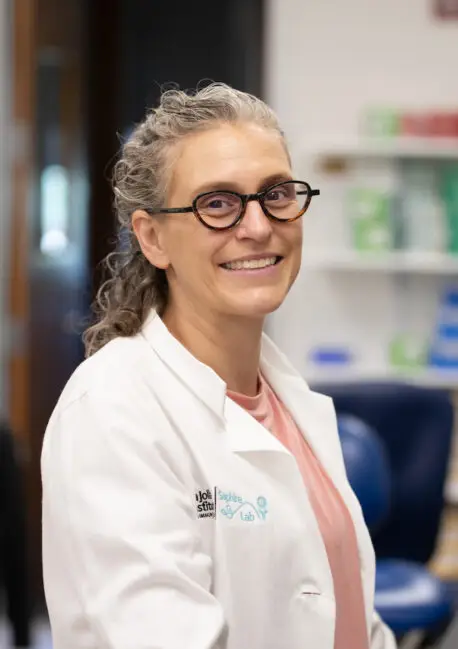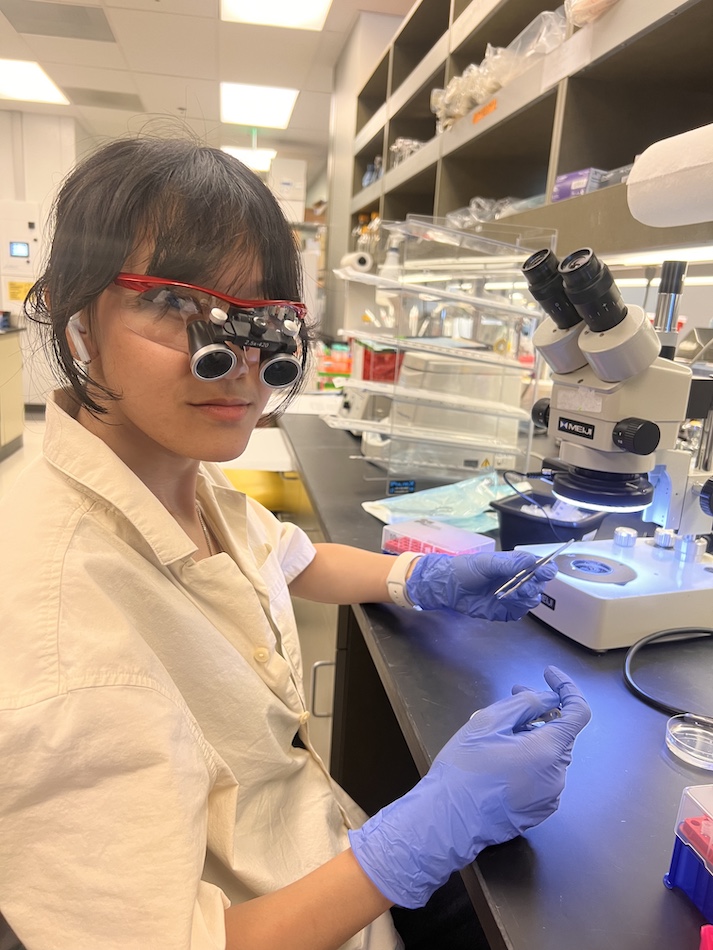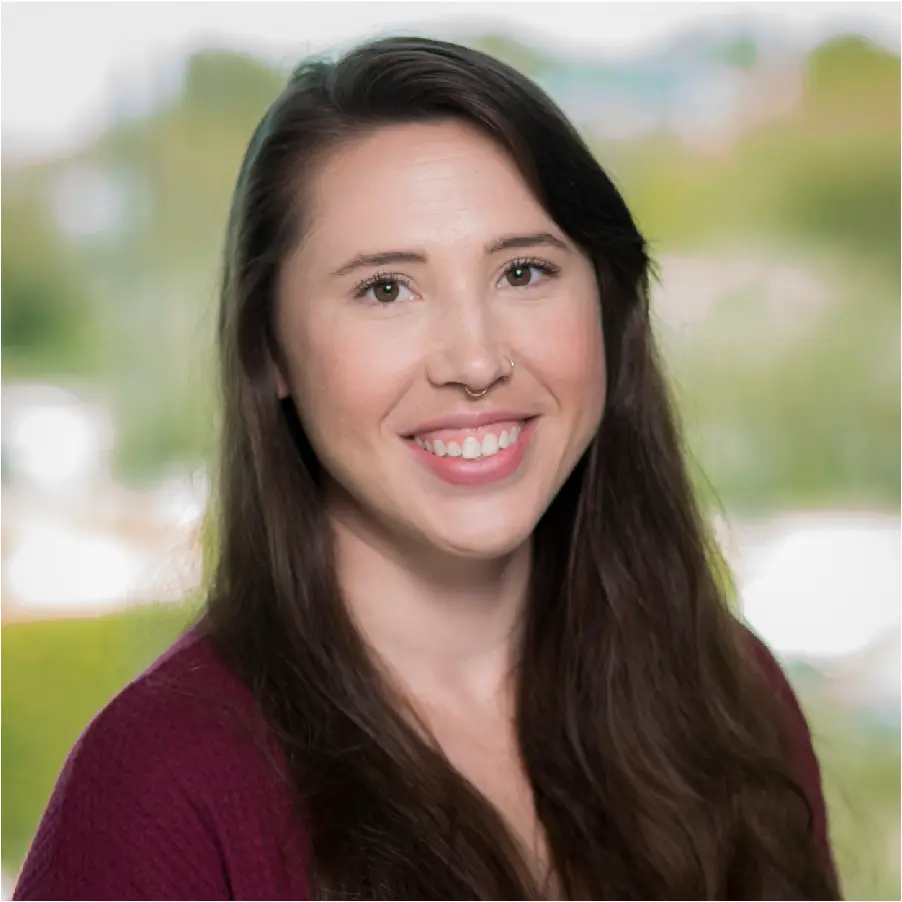La Jolla Institute for Immunology (LJI) is home to a renowned team of scientists dedicated to studying how human antibodies fight deadly viruses such as SARS-CoV-2, Ebola virus, Lassa virus, measles. These researchers, led by LJI Professor, President, and CEO Erica Ollmann Saphire, Ph.D., have recently received funding from the U.S. Department of Energy (DOE) to help speed up this critical work.
“This effort links the pandemic prevention work of LJI to a national DOE framework,” says Saphire, who will lead this research alongside Kathryn Hastie, Ph.D., Director of LJI’s Antibody Discovery Center.
The Saphire Lab will receive funding through the DOE’s Biopreparedness Research Virtual Environment (BRaVE) initiative, a national program to accelerate the development of vaccines and therapies against pathogens with pandemic potential.
With the new funding, Saphire, Hastie, and their colleagues will work with other institutions to develop faster methods for capturing detailed images of human antibodies and viral structures. Streamlining this process may help scientists develop effective vaccines and antibody therapies against deadly pathogens.
The work at LJI is part of a larger BRaVE project led by Aina Cohen, Ph.D., Division Head of Structural Molecular Biology at the Stanford Synchrotron Radiation Lightsource (SSRL) at SLAC National Accelerator Laboratory.
“While the response to COVID-19 led to life-saving vaccines and treatments at an unprecedented pace, over a million people died in the U.S. before the majority of these were distributed,” SLAC shared in a recent article. “To prevent widespread illness from future diseases, the researchers want society to be able to respond 10 times faster to outbreaks.”
What we can learn from antibodies

The human body can make near-infinite types of antibodies (perhaps around one quintillion), and each antibody has a special molecular structure. Antibody structures “stick” to corresponding targets, such as viral proteins. The best antibodies against disease are ones that bind to and neutralize vulnerable areas of a virus, stopping infection in its tracks.
Scientists need to see exactly what makes some antibodies so great at neutralizing viruses. Their goal is to develop vaccines and therapeutics that exploit the best kinds of antibody warriors.
One way to study extremely small antibody and viral structures is through a technique called x-ray crystallography.
For x-ray crystallography, researchers begin by isolating specific proteins from a sample. These proteins may be antibody fragments, viral proteins, or antibody and viral molecules bound together. The scientists then use chemical agents to get multiple copies of a protein structure to line up in little rows, forming a microscopic crystal.
Scientists then use a machine called a synchrotron to pelt their crystal with radiation from all sides. Their precious crystal is blasted to smithereens, but that’s okay.
The scientists need to see how the crystal diffracts radiation—to measure the angles and intensities of the radiation beams after they hit the crystal. They use those measurements to reconstruct the three-dimensional molecular structure of the proteins in that crystal. It’s complex work. Imagine trying to reverse-engineer a disco ball by examining just the light it scatters across a room.
How scientists use these protein “maps”
Scientists use these three-dimensional structures like enemy reconnaissance. With these detailed maps, researchers can spot exactly where a virus, such as SARS-CoV-2 or HIV, may be vulnerable to antibody attacks. They can also examine antibody structures and learn which features give certain antibodies their fighting prowess.
The synchrotron facility at SSRL is critical resource for scientists across the United States, including researchers at LJI. “We can get valuable information on the structure of human antibodies, either alone or bound to their viral protein targets,” says Hastie.
X-ray crystallography has led to critical breakthroughs in medical research. Rosalind Franklin’s images of DNA, captured through x-ray crystallography, led to the discovery of DNA’s double-helix structure. More recently, Hastie and her colleagues in the Saphire Lab used x-ray crystallography to solve the structure of Lassa’s virus’ glycoprotein, an important target for antibody therapeutics.
Speeding up the process
It may seem odd that a molecule from a human body, like a piece of an antibody, could form a crystal. The trick is to give that molecule just the right conditions.
Some molecules are eager to form crystals. Water molecules naturally line up to form crystals if they get cold enough. But many antibody fragments and viral proteins are very fragile, so getting them to form a crystal is tough. “You have to try many, many different conditions to try to coax a protein from its soluble liquid phase into these beautiful crystals,” says Hastie.
Capturing a challenging structure, such as the Lassa glycoprotein, can take years. This kind of timeline is not realistic for scientists facing off against emerging viruses and rapidly spreading diseases. “The faster we can solve a structure, the faster researchers can do something with it,” says Hastie.
With the new funding, the LJI team will work to simplify the crystallization process. “This is really extraordinary for us,” says Hastie. “A major goal of the BRaVE grant is to try to make this process more systematic—to try to figure out what conditions proteins are most likely to crystallize in.”
As the LJI team hones the crystallization process, researchers at SSRL and the other partner institutions will work to streamline the process of mapping protein structures and uncovering molecules that may work as potential viral inhibitors.
Saphire Lab will be sending SSRL many samples, such as antibody fragments and viral proteins, to experiment with along the way. “It’s a fantastic collaboration that we are really excited to be a part of,” says Hastie.


